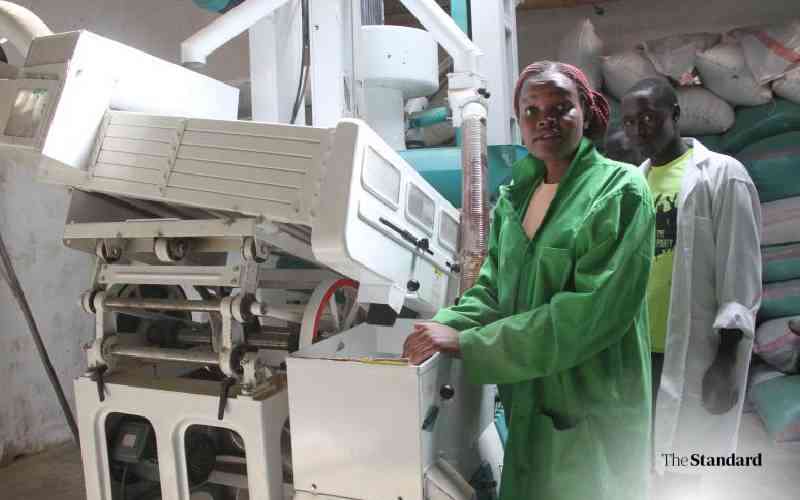For much of the last two weeks, large parts of Europe and the US steamed under heat domes that pushed temperatures to dangerous and unusual highs.
At men’s fashion week in Paris, fans were among the hottest accessories. Rihanna reportedly carried a mini electronic one at ASAP Rocky’s second runway show for AWGE. Guests arriving at Hermès were handed cooling towelettes, and water was passed round at the particularly steamy Grace Wales Bonner venue. (Dior was carefully climate controlled to safeguard the priceless Chardin paintings on display).
But the heatwave meant more than a sweaty week of discomfort on fashion’s front rows; it is a sign of dangerous and destabilising changes to the climate that mean such weather extremes are becoming more frequent, more severe and wider spread, according to climate scientists. And that means greater risk for fashion’s bottom line.
Unpredictable weather changes the way people shop and makes it harder to manage inventory and merchandising mix. It threatens supply of raw materials like cotton, cashmere and leather, with flooding and drought posing critical threats to growing regions. And it risks worker health, hampers manufacturing productivity and presents erratic logistical challenges.
Insurers are increasingly blaring the alarm about how all this is likely to affect the global economy.
“This is not a one-off market adjustment. This is a systemic risk that threatens the very foundation of the financial sector,” insurance giant Allianz SE board member Günther Thallinger wrote in a LinkedIn post earlier this year. “This is not about saving the planet. This is about saving the conditions under which markets, finance and civilisation itself can continue to operate.”
But fashion seems to think it can handle the heat.
While the industry’s biggest brands acknowledge climate change poses a business risk, it’s not one they consider financially material in the near term, according to regulatory filings published over the last few months.
Many companies are disclosing this level of analysis for the first time under new European reporting rules that require the biggest businesses operating within the trading bloc to assess and publish how the changing climate might impact their bottom lines.
Kering, Hermès and Richemont all concluded their current exposure to climate-related risks had no significant material impact. Adidas declared its business is sufficiently resilient for the “foreseeable future.” Zara-owner Inditex sees “relatively limited” financial impact from physical climate risks within the next five years. LVMH noted that increased costs for raw materials like leather, cashmere, wool, cotton and silk could become a critical issue as soon as 2030, but added that the company had taken steps to insulate itself against such risks by moving to procure lower-impact and certified materials.
The disclosures offer a glimpse into one possible reason climate issues are moving down executive agendas, even as the consequences of a warming planet are becoming more visible. Five years is a long time horizon in a trend-driven industry where executives have to navigate plenty of other macro challenges — from tariffs to geopolitics — that are having a more immediate and tangible financial impact.
To the extent that weather extremes and other climate-related disruptions might affect business, companies say they have managed these risks through flexible, diversified supply chains, insurance coverage and transition plans that include reducing emissions, switching to lower-impact materials and reducing water consumption.
The problem is most companies and countries are not delivering on their environmental commitments with the result the world is careening towards critical climate tipping points faster than expected. Among some insurers, investors and climate experts there is growing concern that companies are underestimating their risks.
“If you’d asked me five years ago how bad things could get, I would not have guessed about these heat waves we’re having now,” said Vidhura Ralapanawe, a climate scientist and head of sustainability at Hong Kong-based apparel sourcing business Epic Group. “I think everyone is underplaying the materiality.”
Climate risk assessments are difficult. They’re costly and technical and rely on in-depth knowledge about complex global supply chains that many brands simply don’t have. Accurate and up-to-date data on flood and heat risk is hard to come by and in some cases non-existent. Companies base their analysis on a range of different scenarios, but the rapidly changing climate landscape is messing with models that rely on historic data to project future trends. Changing boundaries and assumptions can lead to vastly different conclusions.
An analysis conducted by Cornell University and the asset manager Schroders in 2023 concluded that soaring temperatures and intensifying flooding in four key apparel manufacturing hubs in Asia could reduce operating profits at exposed brands by 5 percent or more. And that was a conservative estimate.
Schroders has upped its engagement with apparel brands and other investors to deepen the conversation around climate risk and resilience. The topic is still quite nascent, but interest is rapidly growing, said Schroders’ active ownership manager Katie Frame. More brands are also beginning to pay attention to indoor heat risks at the factories they work with and to introduce temperature standards into their sourcing policies, said Jason Judd, executive director at Cornell’s Global Labour Institute.
By and large, though, fashion companies are leaning on risk mitigation and contingency plans that assume there’s enough agility in their sourcing to absorb near-term climate shocks. But addressing the issues after a crisis has already hit is likely to be much more expensive and there may be less flexibility in the system than projected. Suppliers and their employees are already grappling with the fallout from longer bouts of dangerous heat and risks of more frequent flooding, even that has yet to filter through to material disruptions at a brand level.
“I’m not convinced that when multi-region climate risk comes whether we have sufficient elasticity in the supply chain to switch,” Ralapanawe said. “There won’t be any places for people to shift.”








